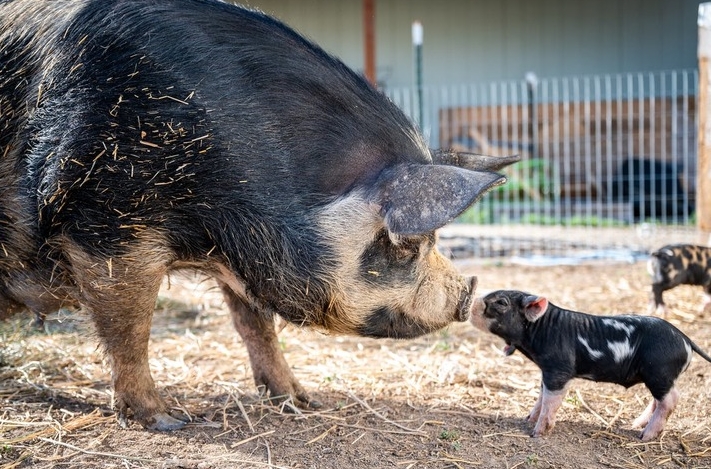
7 Aug
EU lifts ban on animal by-products in pig feed
The EU has lifted its ban on the use of animal by-products as animal feed. The proposed change in legislation allows the use of processed animal protein (PAP) from pigs in poultry feed and from poultry in pig feed. While most EU member states approved the change, France and Ireland abstained. On 2 July, the EU Council voted unanimously to adopt the TSE regulation.
There are thousands of genuine and aftermarket Detroit Diesel spare parts in our catalog. Use it for finding spare parts for the following engine elements in a matter of seconds by inputting part numbers.
Following an outbreak of bovine spongiform encephalopathy (BSE) in 1994, a ban on the use of processed animal proteins (PAPs) in ruminant feed was introduced. Experts believe that BSE is caused by the feeding of cattle feed prepared from the meat and bone meal of infected animals. In an attempt to avoid possible cross-contamination, a ban on the use of PAP was extended to all
farm animals in 2001.
The reason for lifting the ban is twofold. Firstly, the European Green Deal and the Farm to Fork strategy encourage the use of by-products in the food industry and the use of organic and local ingredients.
“PAP meets these requirements,” says Karin van Vuure, nutrition and regulatory manager at Darling Ingredients and member of the European Fat Processors and Refiners Association (EFPRA).
Furthermore, the risk of cross-contamination seems to be low. The last case of BSE in cattle in the EU was in 2016 and the last case in the UK was in 2018. A total of 24 of the 27 Member States were classified as having a minor risk status.
The benefits of lifting the ban are numerous, says Van Vuure. Poultry slaughterhouses have more opportunities to use by-products from their slaughter, especially those not used in pet food. Such products include poultry blood meal, feather meal and low-protein food.
In addition to reducing waste and dependence on imported protein, the use of processed animal products in feed can also improve feed quality as the digestibility of this type of protein and phosphorus is high. Depending on the requirements set in the processing chain, poultry and pig feed could also become cheaper, she added. In addition, the carbon footprint of diets would be improved. “Many farmers remember the time before the ban as a time with a more balanced diet because of the use of animal proteins,” said Van Vuure.
The change has been welcomed by farming associations: Copa-Cogeca and the Association of Poultry Processors and Trade (AVEC). The EU proposal recognises that there is no risk to food safety in its authorisation of these products and proposes a legislative framework that ensures a high level of safety for all participants in the supply chain, says Paul-Henri Lava, senior policy advisor to AVEC.
AVEC welcomes the opportunity to diversify the feed supply through the use of processed animal proteins from pigs, says Lava, and expects poultry farms to be a similar source of protein for the pig sector.
Demand for protein-rich feed
The demand for protein-rich feed is currently high in the EU. Driven by globalisation and climate change, Lava believes this trend will continue in the future. “Offering sourcing solutions for protein-rich feed in the EU is a step in the right direction,” explains Lava. “EU authorities should go further in this direction.”
Processed animal proteins are produced from Category III animal by-products derived from healthy animals that are fit for human consumption at the time of slaughter. In the 20 years since the ban was introduced, researchers have developed a PCR test to ensure that papillomaviruses do not contain by-products.
“Because there is a cross-species ban in Europe, accordingly there are also tests on pigs and poultry,” says Van Vuure.
More research is needed for PAP
Much has changed since papillomaviruses were first banned 20 years ago. For example, processing technologies have evolved and improved. There has been some research into the nutritional benefits of porcine papillomaviruses used in poultry feed. In a recently published white paper, Van Vuure outlines some of the results.
Working in collaboration with EFPRA, Wageningen Animal Research conducted a study in 2010 to evaluate the nutritional and digestibility of PAP as well as the overall performance of laying hens that consumed the feed. The 2010 study evaluated 4 types of PAP in feed: 40%, 50%, 58%, and 60% protein in the diet.
Layer performance differed between the treatments. The most favourable of the four was PAP-50% and the least favourable PAP-40%. The differences in performance appear to be partly due to differences in feed intake and corresponding amino acid intake.
While the addition of PAP generally did not reduce feather pecking behaviour, in PAP-40 and PAP-50 diets, chickens showed a delay in the development of feather damage. At the same time, compared to flocks receiving diets with higher levels of PAP, those receiving PAP-40 and PAP-50 diets showed improved bedding, feeding and walking behaviour and floor pecking.
Digestibility and overall performance
A 2018 study evaluated digestibility and overall performance when 2 types of porcine PAP were included in broilers’ diets to replace soybean meal. Researchers assessed intestinal health, litter quality, pad damage and bone quality. The results of the study show that both types of PAP tested can be used as suitable substitutes for soybean meal in broiler diets without affecting performance results. The performance study was followed by a digestibility study.
However, two studies are not really enough to draw definitive conclusions. “As a nutritionist and scientist, I think we need to do more research,” says Van Vuur. The ban is expected to be lifted in October this year.
Copyright © 2021 PDSConsulting Contact us: info@pdsconsulting.co.uk.